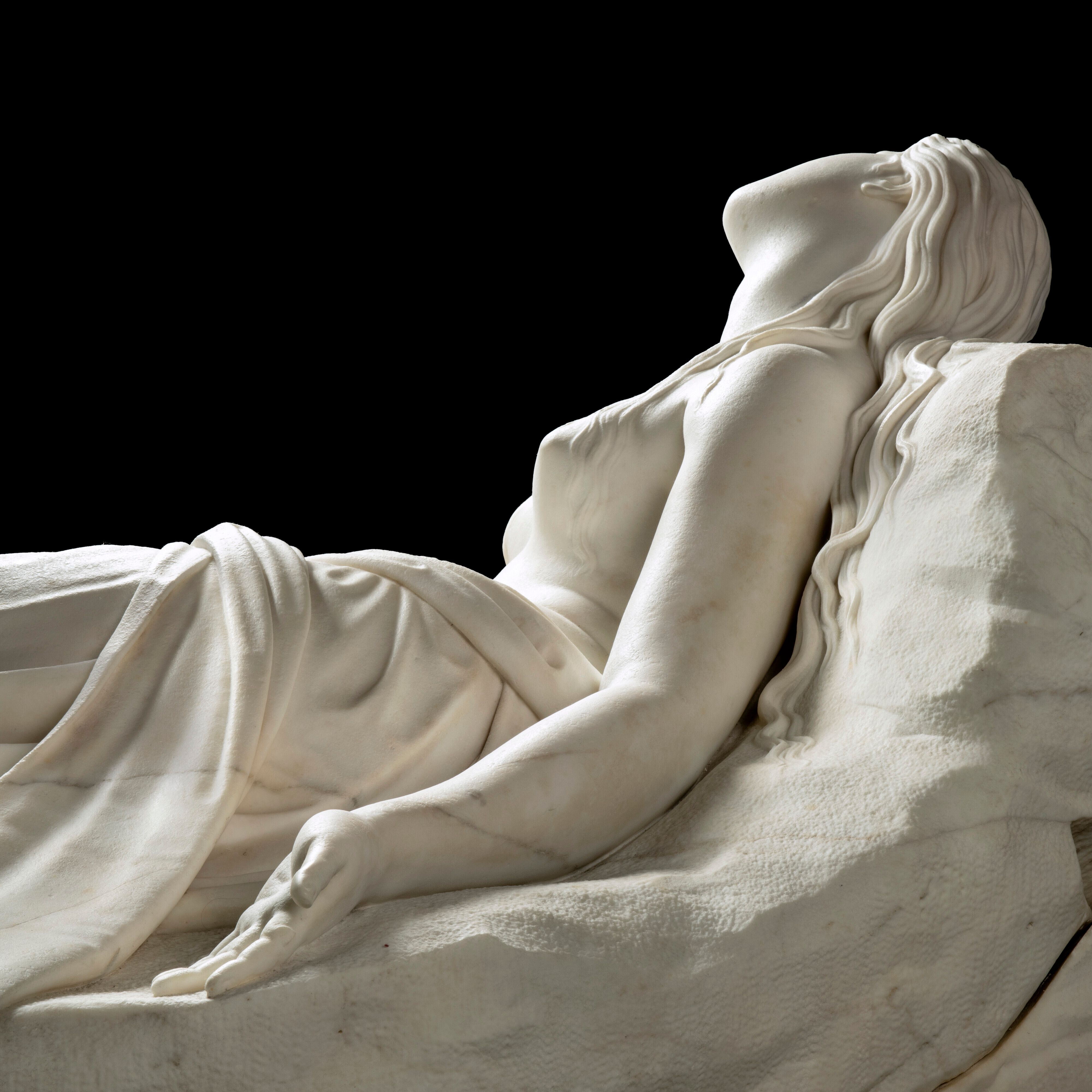
Twenty years ago, a heavily weathered, darkened sculpture by an unknown artist sold for £5,200 ($7,540) at a garden statuary auction in Sussex, England. It was identified only as A white marble figure of a young woman.
Last summer, that very same piece, restored to its original white finish, was identified as a long-lost work of Italian master Antonio Canova. It will now be sold at Christie’s London for an estimated £5 million to £8 million ($6.5 million to $10.5 million), just in time for the bicentenary of the artist’s death.
“This work has been searched for by scholars for decades, so the discovery is of fundamental importance for the history of collecting and the history of art,” Canova scholar Mario Guderzo, told the Art Newspaper.
The sellers remain anonymous, but have been identified as a British couple. They bought the work—which depicts a penitent Mary Magdalene “in a state of ecstasy,” according to Christie’s—to decorate their garden. When they realized they might have a sleeper on their hands, they enlisted art adviser Francis Outred to find out more about the piece.
Antonio Canova, Maddalena Giacente (Recumbent Magdalene), 1819–22, as it appeared in the auction catalogue for its 2002 sale at Sotheby’s Sussex, where it fetched just £5,200 ($7,540).
It turned out the sculpture was commissioned by Robert Jenkinson, second Earl of Liverpool, during his term as the British prime minister. Titled Maddalena Giacente (Recumbent Magdalene), the piece was made between 1819 and 1822. (Canova’s initial plaster model for the work is today in the collection of the Museo Gypsotheca Antonio Canova in Possagno, Italy.) It was one of Canova’s final sculptures, and was delivered to Jenkinson after the artist died, in 1822.
Christie’s first offered the sculpture in 1852, after the death of Jenkinson’s heir and brother. Its connection to Canova appears to have been lost around 1920, when Herbert Smith, a carpet manufacturer, acquired it through the sale of a manor house called Witley Court. A fire eventually destroyed much of the home.
In a 1938 auction of the house and its contents, anti-death penalty activist and entrepreneur Violet Van der Elst bought the work, no longer recognized as Canova’s. A local art dealer purchased her Kensington home—and its garden statuary—in 1959. It is reported to have been sold again with the house in the late 1960s, after which the trail run cold until the 2002 auction.
Antonio Canova, Maddalena Giacente (Recumbent Magdalene), 1819–22. Photo courtesy of Christie’s London.
Despite its exposure to the elements, the work remained in very good condition, save for the crucifix on Magdelene’s shoulder, which was largely lost. It is expected to be a star lot at Christie’s “Classic Week” sales in London this July.
“The story is amazing,” Donald Johnston, the head of Christie’s sculpture department, told the Financial Times. “I’ve seen little bronzes on tabletops that have been overlooked but not something of this scale or caliber with this history.”
Ahead of the July 7 sale, the sculpture will be on view at Christie’s London this weekend, before traveling to the auction house’s showrooms in New York (April 8–13) and Hong Kong (May 27–June 1).